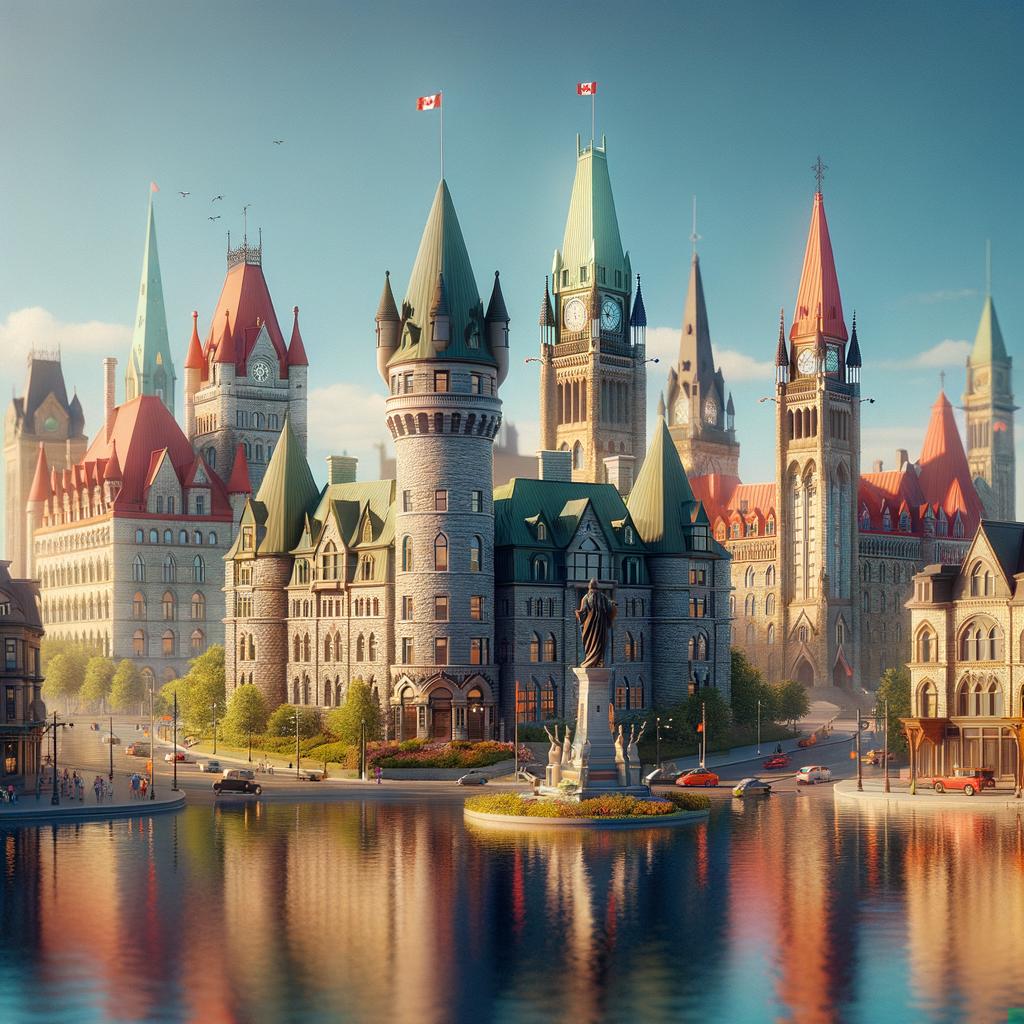Top Historical Landmarks to Visit in Canada
Posted on November 15, 2024 • 4 minutes • 768 words
Table of contents
Canada is a treasure trove of historical landmarks that tell the stories of its rich past. From ancient Indigenous sites to colonial forts and majestic architecture, each landmark offers a unique glimpse into the fabric of Canadian history. Whether you are a history enthusiast or simply intrigued by the beauty of these sites, exploring Canada’s historical landmarks is a fantastic way to connect with the nation’s heritage. Here, we will take you on a journey to discover some of the top historical landmarks that you should visit in Canada.
1. The Canadian Museum of History
Located in Gatineau, Quebec, the Canadian Museum of History is not just a museum; it is a gateway into the narratives that shape Canada. With its striking architecture designed by Douglas Cardinal, the museum houses exhibitions that explore the history of Indigenous peoples, the arrival of European settlers, and the evolution of Canadian identity. Highlights include the Grand Hall, featuring totem poles and artifacts, which provide an enriching experience for visitors.
2. Old Quebec City
Step back in time by wandering through the cobbled streets of Old Quebec City, a UNESCO World Heritage site. The area is renowned for its well-preserved colonial architecture, including the iconic Château Frontenac, which dominates the skyline. Stroll along the fortified walls, visit the Citadel, and enjoy the vibrant atmosphere of this historic district. Old Quebec City is a living museum, showcasing the blend of French and British influences that have shaped the region.
3. Fort Louisbourg
Located on Cape Breton Island in Nova Scotia, Fort Louisbourg is a reconstructed 18th-century French fortress that offers a glimpse into colonial life. Visitors can explore the fort, interact with historical interpreters, and witness reenactments that bring the past to life. The site includes original buildings, as well as reconstructed ones, creating an immersive experience that highlights the strategic importance of this fort during its operational years.
4. Rideau Canal
The Rideau Canal, which runs through Ottawa, is an engineering marvel that showcases Canada’s historical significance. Built between 1826 and 1832, the canal was originally designed for military purposes, linking the Ottawa River to Lake Ontario. Today, it is a UNESCO World Heritage site, popular for boating in the summer and skating in the winter. The canalside parks and pathways make it an ideal place for leisure activities while appreciating its historical importance.
5. The Plains of Abraham
This historic battlefield, located in Quebec City, is where the British and French forces clashed in 1759 during the Seven Years’ War. The Plains of Abraham is now a beautiful park, offering a serene environment for visitors while commemorating a pivotal moment in Canadian history. The site features monuments, plaques, and interpretive signs that detail the events that took place here, making it a must-visit for history buffs.
6. Banff National Park
While primarily known for its stunning natural beauty, Banff National Park also has layers of history worth exploring. Established in 1885, it is Canada’s oldest national park and played a crucial role in the development of the national park system. Visitors can learn about the Indigenous peoples who have inhabited the area for thousands of years, as well as the stories of early explorers and settlers. The Banff Park Museum, located in the town of Banff, showcases artifacts and exhibits that tell the story of the region’s natural and cultural history.
7. The Canadian War Museum
Situated in Ottawa, the Canadian War Museum provides a comprehensive look at Canada’s military history. The museum’s architecture is a striking representation of strength and resilience, and its exhibits cover various conflicts, from the First World War to modern-day peacekeeping efforts. Artifacts, personal stories, and multimedia presentations create an engaging experience for those looking to understand Canada’s role in global conflicts.
8. Lunenburg
The town of Lunenburg in Nova Scotia is a UNESCO World Heritage site known for its well-preserved colonial architecture and maritime history. Founded in 1753, Lunenburg is one of the best examples of a British colonial settlement in North America. The brightly colored buildings along the waterfront, the Fisheries Museum of the Atlantic, and the iconic Bluenose II, a traditional Nova Scotia schooner, all contribute to Lunenburg’s charm and historical significance.
Conclusion
Exploring the historical landmarks of Canada offers an enriching experience that connects visitors with the country’s diverse heritage. Each site presents a unique narrative, whether it is the Indigenous history, colonial past, or military significance. From museums and forts to charming old towns, Canada’s historical landmarks are waiting to be discovered. So pack your bags, embark on this journey, and immerse yourself in the stories that shaped this great nation.





